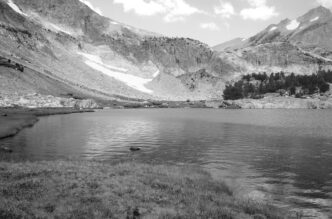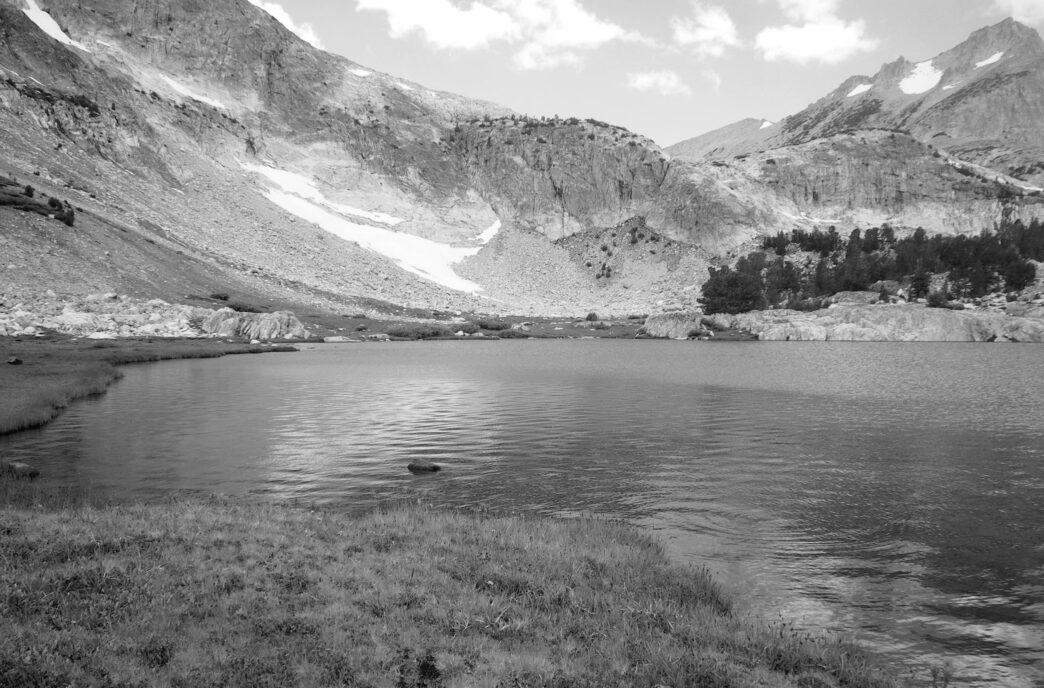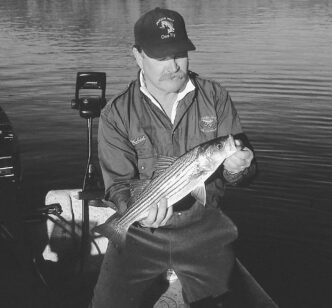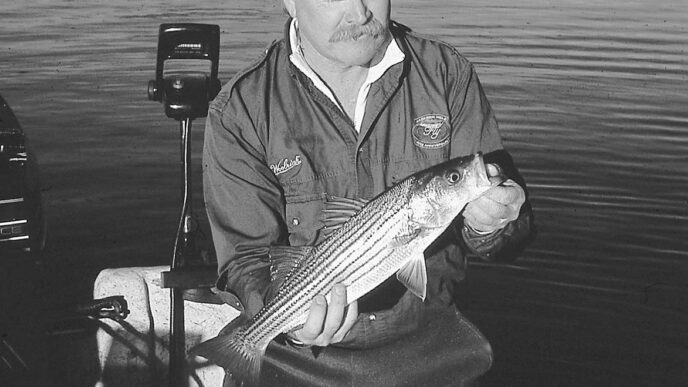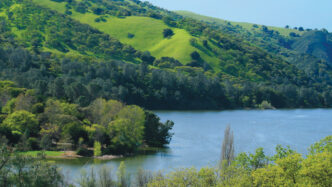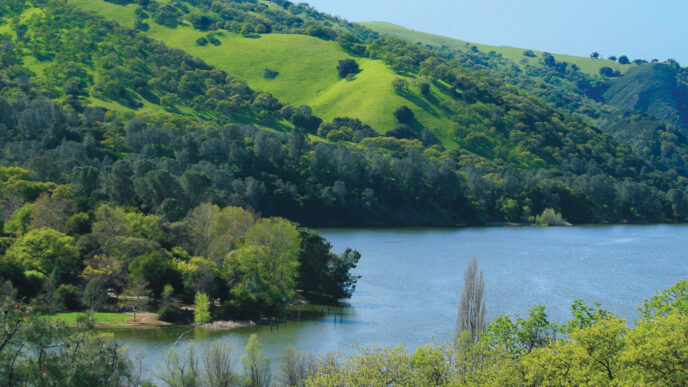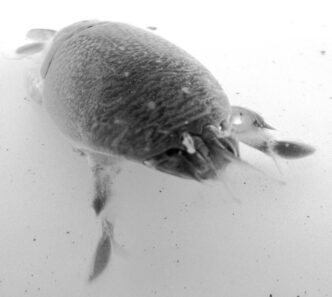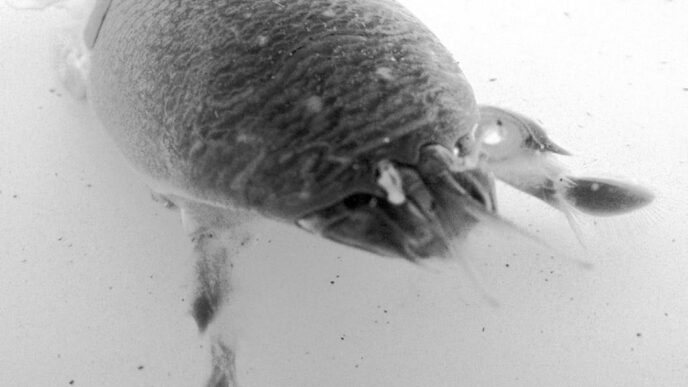About two miles outside the east entrance of Yosemite National Park, Saddlebag Lake Road branches off Highway 120, leading higher into the mountains and up to the keystone lake in the 20 Lakes Basin area of the Sierra, Saddlebag Lake. A short distance to the west of Saddlebag, tucked into the Hoover Wilderness, is one of its many companion lakes, quite possibly the one that gets the least attention: Greenstone Lake.
In past years, I had made several trips to this area, hiking along the five-mile loop at the north end of Saddlebag Lake and fishing the prominent lakes there — Helen, Shamrock, and Z — and their connecting streams. But because Greenstone Lake is just off the main trail of the basin loop, I had never wandered over to it and tested its waters. A few years ago, following a trip to the 20 Lakes Basin, I figured it was time to explore Greenstone and its environs. Using the Internet and searching through the books and magazines I had on this region, I found out what I could about the angling possibilities there. I also studied my maps of the area and used Google Earth to get an aerial perspective of the lake and its inlet and outlet streams. After this initial research, I had a good hunch that the fine fishing I had experienced at the other lakes and creeks in the basin would continue there, as well.
From Saddlebag Lake, where the journey starts, the rest of the trip is relatively easy, beginning with a water taxi ride across Saddlebag to its north shore. Tickets for the water taxi are purchased at the Saddlebag Lake Resort General Store located on the lakefront. (Check online for the water taxi schedule of operation and rates at http://www.saddlebaglakeresort.com/Boats.html.) Because of the high elevation of the lake, which is over 10,000 feet, also check to be sure the water taxi is in operation. There’s a chance that Mother Nature might have the final word on this issue, because ice-out on lakes high in the Sierra can come late in the summer. In 2010, the water taxi service didn’t open until the second week of July because of the late thaw on the lake.
The boat ride is a pleasant 10-to-15-minute cruise across the lake, and the taxi docks on the far shore, where a short hike to Greenstone Lake begins. The terrain is gentle. Following one of my trips to Greenstone, I had written in my notes that although this lake is in the high Sierra, “it’s one of the easier day hikes to high-lake fishing that I’ve found.” And that suits me well enough these days.
Fishing the Outlet Stream
You don’t have to hike far to get a line wet here and to get into trout on this outing. About a hundred yards west of the boat dock at the north shore of Saddlebag, you’ll find a stream running down from Greenstone Lake entering Saddlebag. I always enjoy slowly working my way upstream the short distance to Greenstone above, fishing the pools along the way. Brook trout abound throughout this stretch of water, and although many are small, as you might expect, be ready for larger fish, as well.
On one trip to Greenstone, though, I took several rainbows in this stream, with one fatty in the 14-to-15-inch range. It seems some of the stocked trout from Saddlebag Lake below have made their way upstream into Greenstone, and now the lake has a resident population of holdover rainbows, with the ’bows quite likely reproducing in the streams feeding in and out of the lake. The presence of rainbows creates a bonus for fly fishers. I’m happy to report the rainbows found here don’t behave like your typical lethargic hatchery fish. They fight as well as you might expect for a wild rainbow.
Arriving at the Lake
Once at Greenstone, a distance of perhaps a quarter mile from Saddlebag up a gradual slope along the creek, conditions change. Unlike many of the other lakes in the area, Greenstone has a beautiful greenbelt bordering its southern shoreline, making quite a contrast to the rugged, gray, majestic peaks surrounding the lake. While hiking and fishing the lake in late July, the time of year I normally visit this area, I found the shoreline spotted with wildflowers, including red and gold Indian paintbrush, which added to the beauty. Walking around the lake, it was easy to see how Greenstone got its name, with its many rocks in various shades of green.
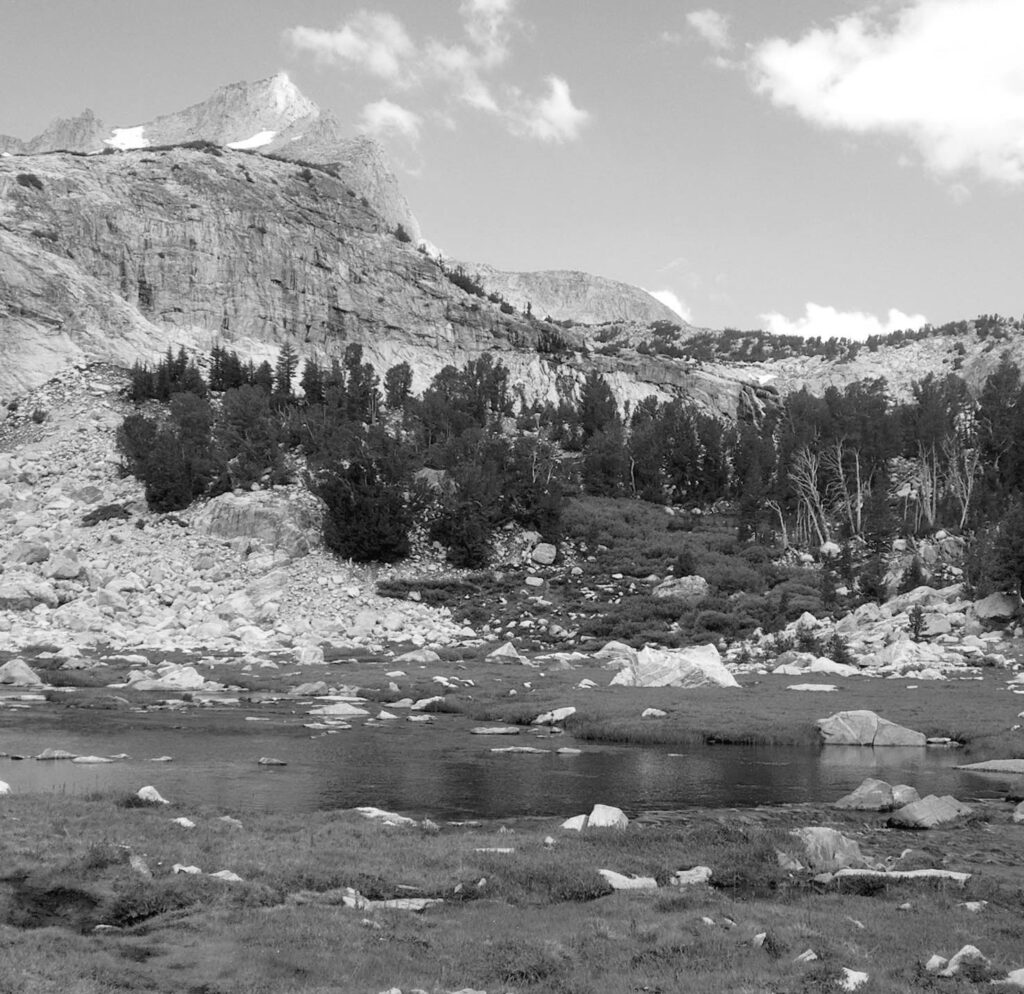
Fishing the lake is more challenging than fishing either the inlet water or the outlet stream. Skirting the lake along the southern shore, I usually find trout cruising the shallow shoreline. As you might expect, they can be a bit leader shy in the quiet water, but you can improve your chances by switching to a longer leader with a 6X tippet, then standing back from the shore and making delicate casts. I take my time, walking and casting to cruising fish when I spot them.
As for gear, I usually carry a 7-foot 4-weight cane rod that I’ve come to love to fish on lakes in the Sierra. I find that a 7.5-foot 6X leader works well for creeks, but as I mentioned, when fishing this lake I extend the tippet length. Simple patterns such as beetle or ant patterns or, even better, a Parachute Adams, size 16 or smaller, are all good flies to try here. Dry flies suit me fine at Greenstone, and I’ve never found a need to fish a nymph, because the inlet and outlet water isn’t deep. A dropper off a dry fly might produce better in the lake, but I had all the action I needed just fishing a dry fly.
Fishing the Inlet
At the north end of the lake, the water braids as a feeder stream comes into Greenstone from Conness Lake above. There are several rivulets and pools to wade and fish here, so picking your way through this area can be a long, leisurely activity. It’s one of the best places to fish at Greenstone, because the trout have good cover around the large boulders that have found their way into the lake, and many trout hold in the gentle current running around these rocks. Fishing the braids is very productive and can provide nonstop action at times. I’ve taken brookies there and found that they were very willing to jump on a well-floated fly. On my last outing, I caught rainbow trout in this area, as well, all averaging about 12 inches in length. This indicates rainbows are taking up residency. But the brook trout still dominate the lake and feeder streams, with the largest I landed topping out at about 11 inches.
Rumor has it that Greenstone Lake also holds golden trout. If this is true, I have not been able to verify it. I have yet to catch a golden there — or even see one, for that matter.
“I’ll Be Back . . .”
After my most recent visit to, I struck up a conversation with a passenger on the Saddlebag Lake water taxi. I judged him to be about my age, maybe a little older — into his 60s, I guessed. He told me he had just climbed up to the Conness Lake area above where I was fishing, following the trail along the waterfall at the far end of Greenstone, where I had called it quits for the day.
I asked him if it was much of a hike up to Conness. “Not too bad” was the reply. The conversation got around to fishing, and I asked if he had noticed any trout activity up there. He told me he had spotted trout in the stream below the lake and indicated with his hands spread to a length of about 10 to 12 inches. Almost as an afterthought, he told me that there were quite a few coming to the surface of the lake, as well. “Very nice,” I thought, as the boat cruised across the lake in the late afternoon. “I’ll be back.”
If You Go…
Driving to Greenstone Lake isn’t very tricky. On Tioga Pass Road — Highway 120 — near the summit of the pass and Ellery Lake, look for Saddlebag Road on the north side. Following it to its end will bring you to Saddlebag Lake General Store, where the journey begins.
Before making the trip, I strongly suggest e-mailing the folks at the Saddlebag Lake Resort (staff@saddlebaglakeresort.com) to make sure that the water taxi is in operation and that the lake is free of ice. (There’s no phone contact listed on their Web site, http://www.saddlebaglakeresort.com/index.html.) As I mentioned in the article, at elevations over 10,000 feet, winters are longer there, and ice-out can come later in the summer.
As for accommodations, there is no shortage in this area. For those who want to stay near the lake, there is a campground at Saddlebag Lake. Information can be found at bag_Lake/Home_SaddlebagLake.htm. However, because Greenstone Lake is a short distance from the east entrance to Yosemite National Park, you might consider staying in the park. That way you can have the best of both worlds, exploring the terrific fishing opportunities in Yosemite and planning a day trip to Greenstone Lake and its vicinity. Camp sites within the park can be reserved online at http://www.nps.gov/yose/planyourvisit/nrrs.htm, but be aware that reservations for the campgrounds fill quickly. Camping is available in some locations in the park without reservations, as well. Visit ing.htm for more information. For visitors who prefer a solid roof over their heads, lodging reservations in the park can be made at accommodations.aspx.
Outside the park, nearby Lee Vining is a fairly short drive away and offers motel lodging. Personally, I make plans early to stay in the June Lake Loop area off Highway 395 and have vacationed there with friends for several years. A large campground and an RV park are available near Silver Lake, as well as rental cabins and motel rooms throughout the loop. If your choice is to stay along the loop, you’ll find the drive to Saddlebag Lake from there typically takes about half an hour to forty-five minutes.
John Parmenter



